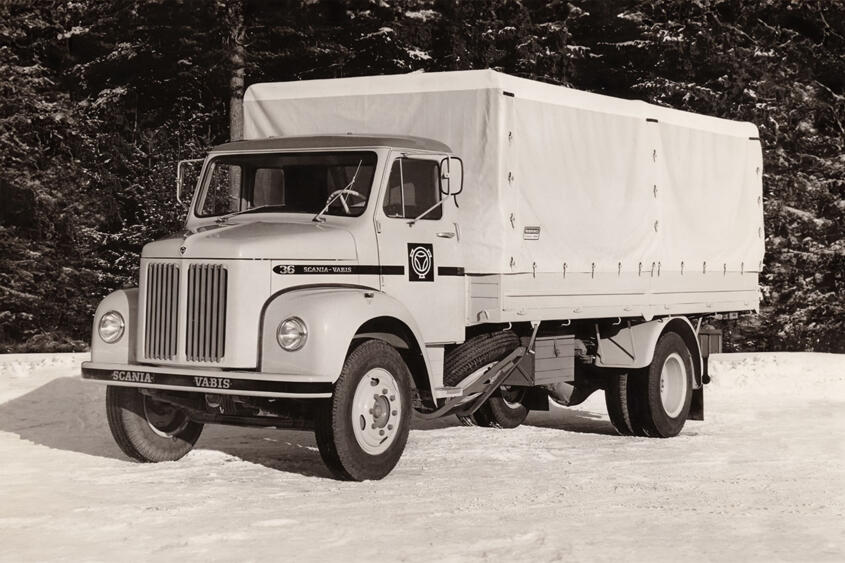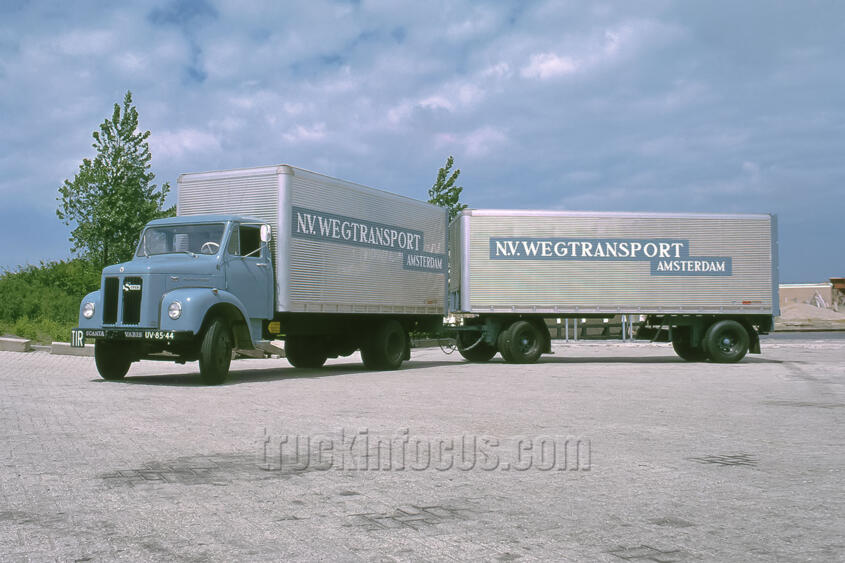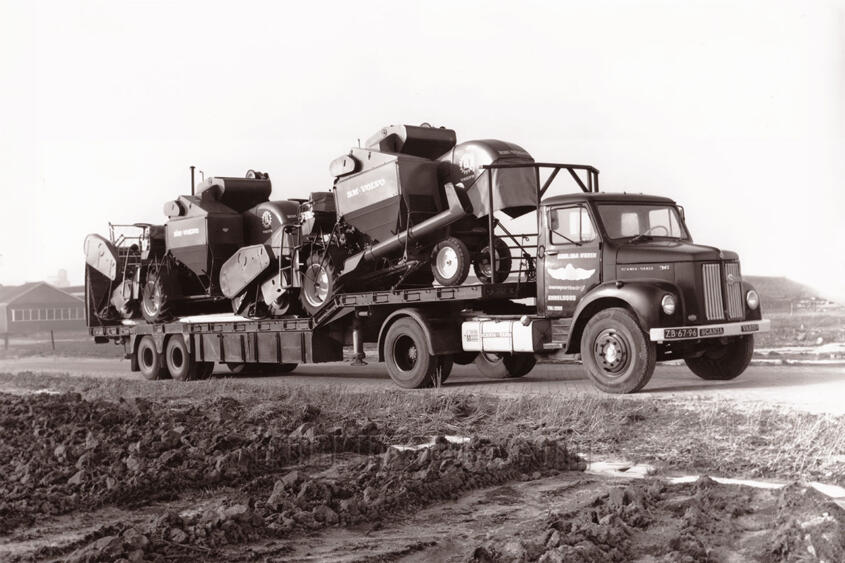The Scania Chronicle
Page 3
By Christoph Büch and Steve St.Schmidt (Berlin 2023)
New conventional trucks from 1958 with built-in headlights and the first cab-overs from 1963
In 1958, new Scania trucks were launched on the market with headlights integrated into the mudguards. The cabs of the L 55 and L 75 models, which were also available with trailing axles as the LS 55 and LS 75 were the first in Europe to be mounted on rubber buffers. Type designations on the side of the hood were also new. From 1960, a version with 6x4 drive was added under the designation LT 75, with the T standing for tandem drive. There was a new generation of engines for the entire series: the four-cylinder D7 with a displacement of 1.9 gallons and 120 hp for the L 55 model and the six-cylinder D 10 with a displacement of five gallons and 165 hp for the L 75 model. The units were designed for exhaust gas turbocharging from the outset. The company had already started building turbocharged engines for ships and rail buses ten years earlier. The turbo version of the D 10 with 205 hp came onto the market in February 1961, recognizable by a "Super" sign on the radiator grille, as turbochargers were still called "Superchargers" at the time. Together with Cummins and Volvo, Scania-Vabis was one of the pioneers in the construction of commercial vehicle engines with exhaust gas turbocharging. With its modern and reliable turbos, the company was at the forefront of technical development throughout Europe. Gradually, all other manufacturers followed. But this took until well into the seventies and eighties.
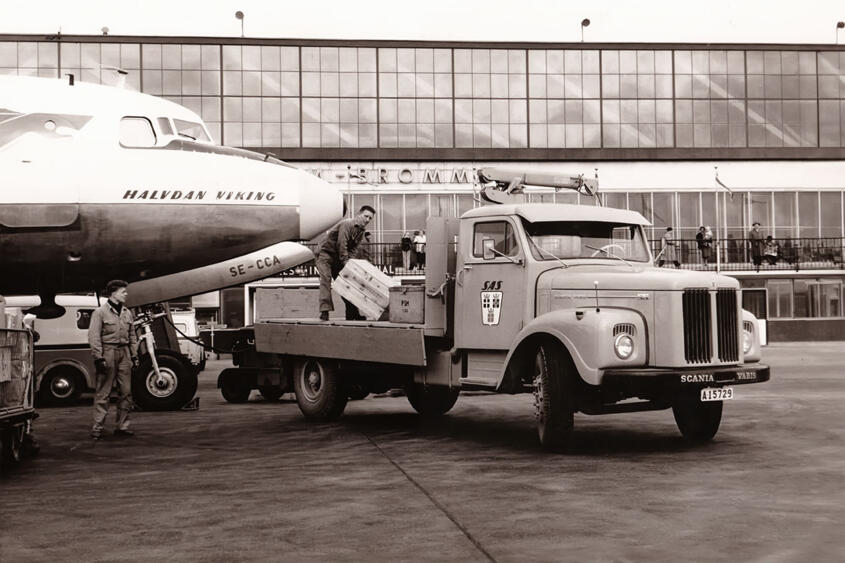
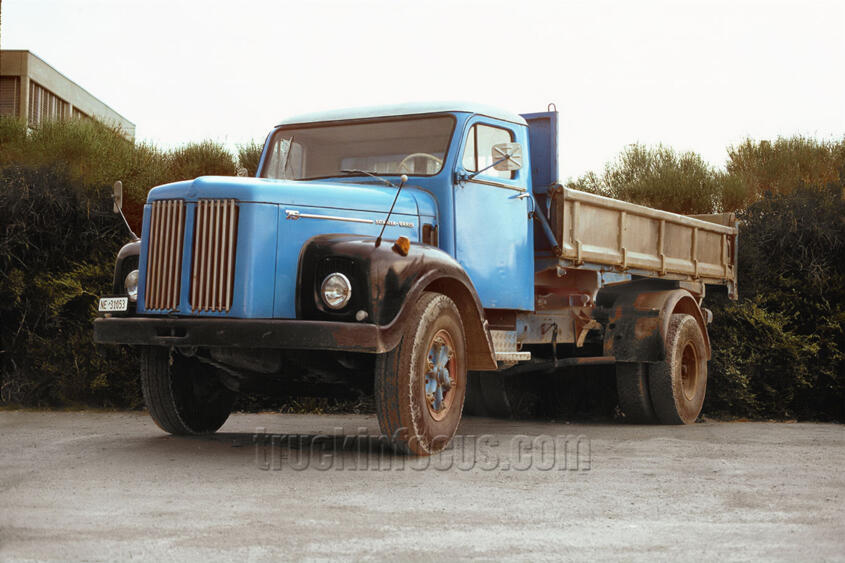
From the mid-1950s, South America was added as a further export market. Products from Södertälje proved their worth in Argentina and Brazil. By 1956, 600 Scania Vabis trucks were already in operation in Argentina, and in the early 1960s the Swedes also set up an assembly plant there. A subsidiary was founded in Brazil in 1957, which built a complete plant for the production of trucks and buses by 1962.
Scania-Vabis had already produced military vehicles for the Swedish army during the war, and in the following decades the land forces also received corresponding special designs. One example is the LA 82 three-axle four-wheel drive truck from 1960, of which 440 units were delivered. The prototype was nicknamed the "anteater" because of its sloping hood. Its robust design ensured that the majority of the vehicles delivered were still operational even forty years later.
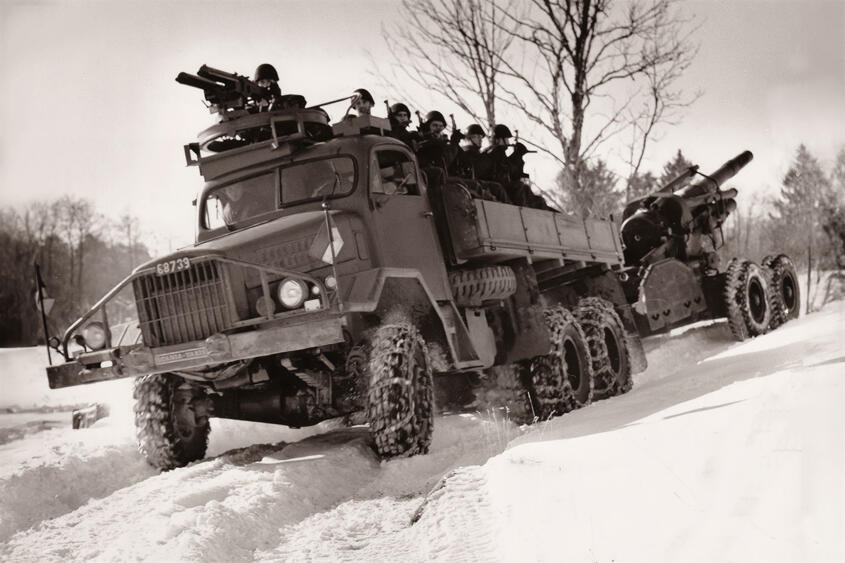
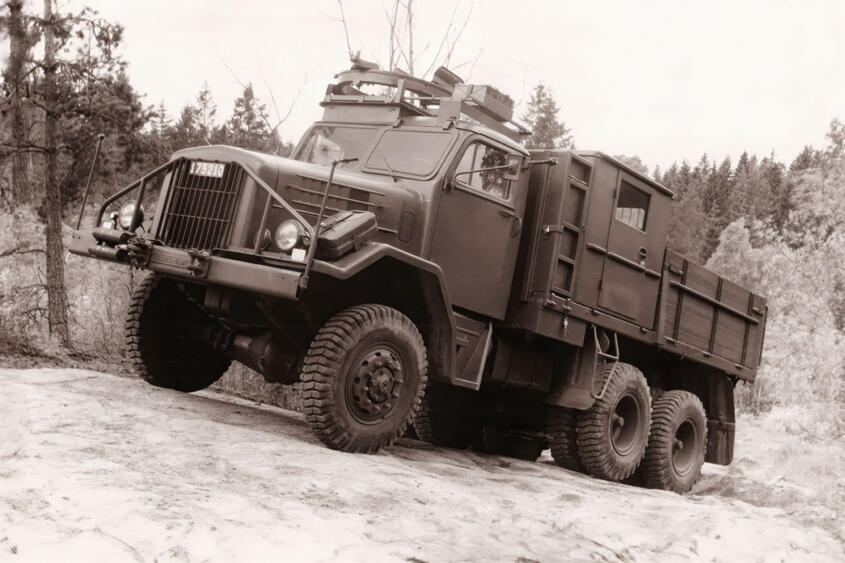
In 1962, the L 55 became the L 56 with 140 and then 145 hp, the L 75 the L 76 with 180 and then 195 hp (220 hp with turbo). In 1963, the L 66 was added, which was primarily intended for export. With its reinforced frame, it was specially designed for transporting concrete. The entire series was fitted with a dual-circuit brake system and power steering as standard. By 1962, 15,270 units of the Scania-Vabis conventional trucks weighing up to 22 tons had left the factory. They formed the basis of a model family that was produced as the L 110 (from 1968) and L 111 (from 1974) until 1980, when the vehicles were no longer called Scania-Vabis but simply Scania.
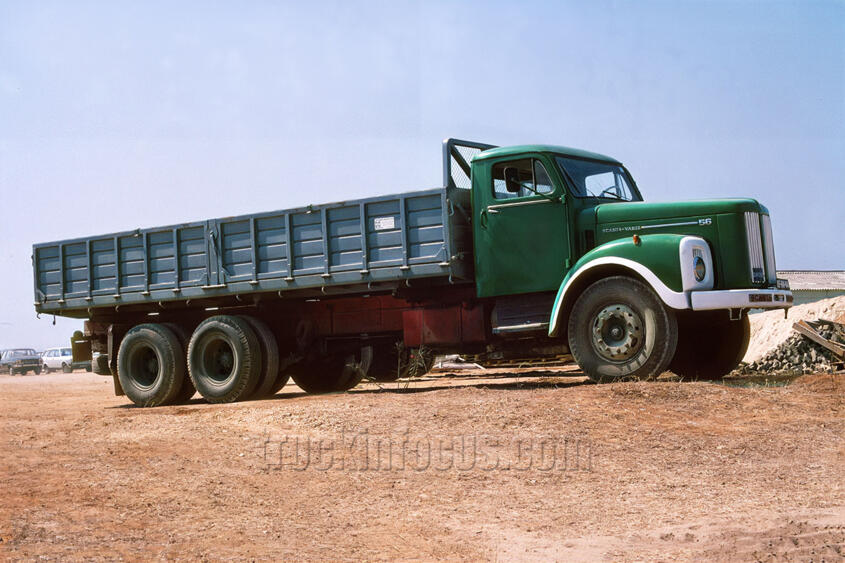
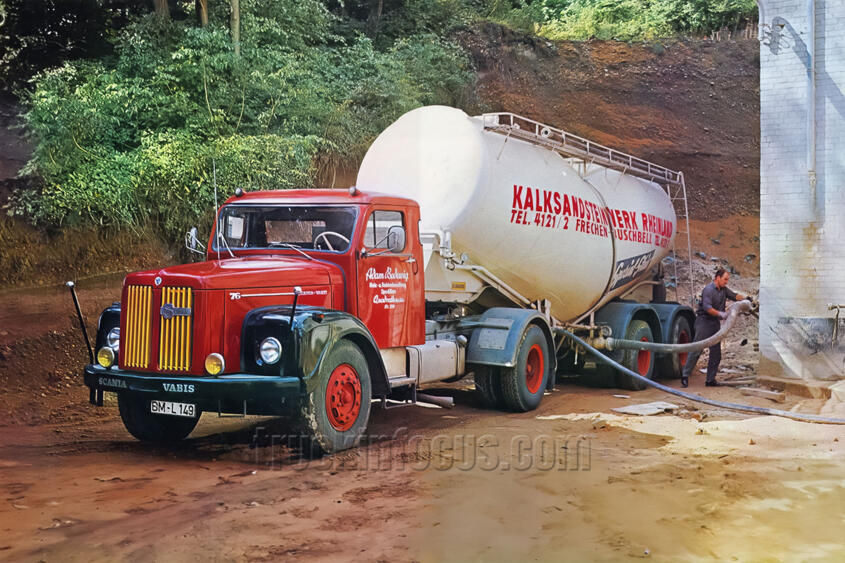
The sixties were a time of welcome growth for Scania-Vabis. From 1960 to 1966, annual production rose from 6,000 to 11,000 vehicles. The factory facilities in Södertälje were expanded accordingly.
The road traffic laws of most European countries at the time stipulated new length limits for trucks. In order to gain a foothold in the European markets, the engineers at Scania Vabis developed a new cab-over truck. The company had only had conventional trucks in its line since the 1930s. This resulted in the legendary LB 76 model in 1963, with the L still standing for truck (lastvagn in Swedish) and the B being taken from the earlier designation "Bulldog".
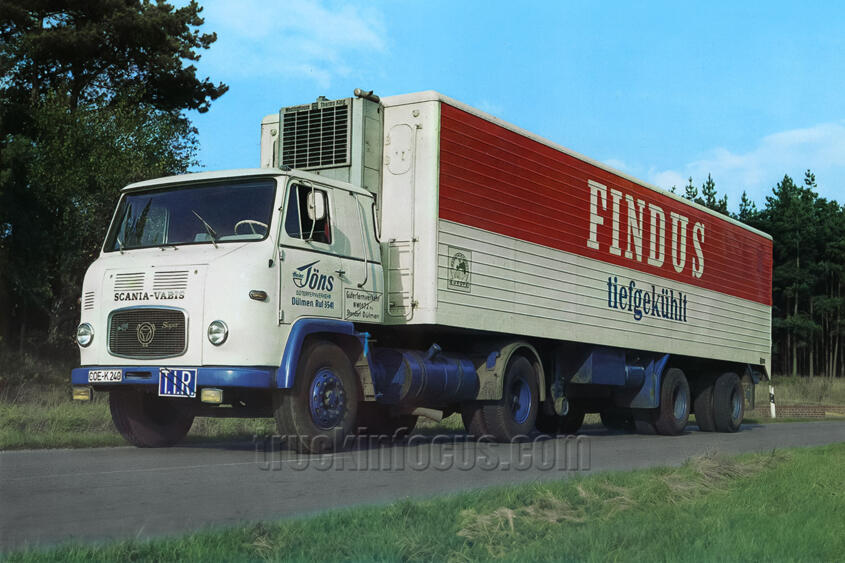
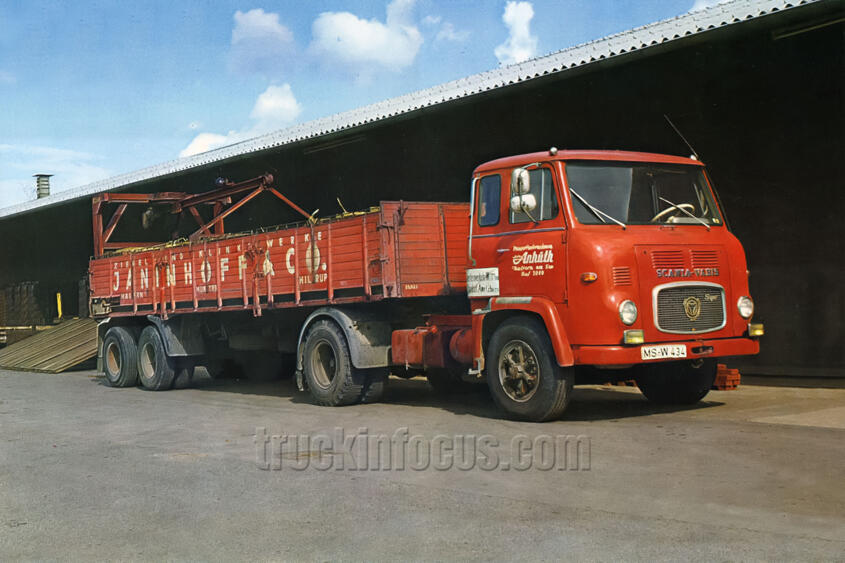
Right from the start, great importance was attached to safety and durability in Södertälje. The new cab was also subject to strict stability requirements. In the advertising of the time, a massive steel body was depicted crashing into a Scania Vabis cab without deforming it significantly. The LB 76, with its rounded design in the style of the time, was a great success, even if it did not yet score points with a tiltable cab. Almost 50 percent of production was exported. To avoid bottlenecks, a branch plant was set up in Zwolle in the Netherlands in 1964. From 1966, Scania-Vabis was also represented on the British market.
In 1964, the performance of the 2.9-gallon engine was increased thanks to an improved injection pump. In the turbo version, the engine now produced 240 hp, and three years later even 260 hp.
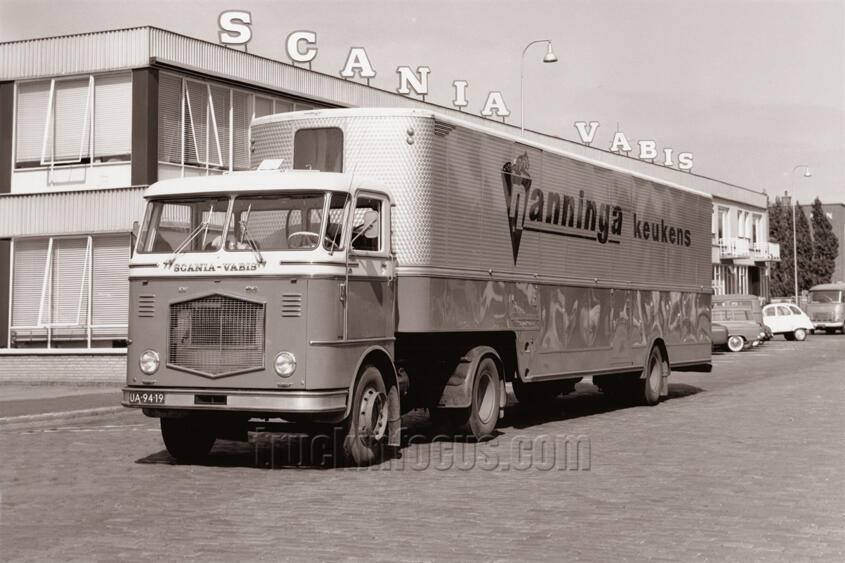
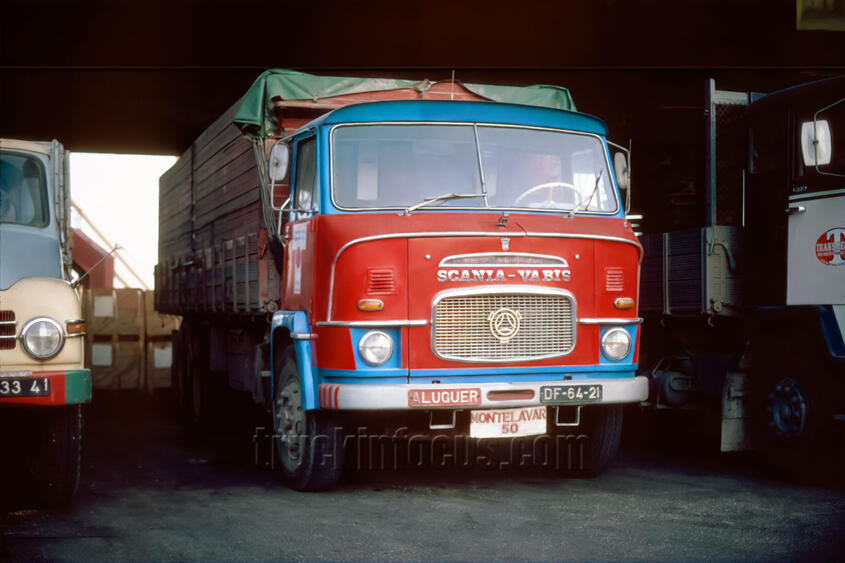
Scania-Vabis trucks in the light class were unusual at first. The presentation of the L 36 model in 1964 was therefore a real novelty. Designed for a gross weight of up to 11.2 tons, the new model was equipped with a 1.37-gallon four-cylinder engine that produced 95 hp as a naturally aspirated diesel and 120 hp as a turbo. Externally, it was recognizable by its significantly shorter hood, which made it maneuverable in inner-city delivery traffic.
